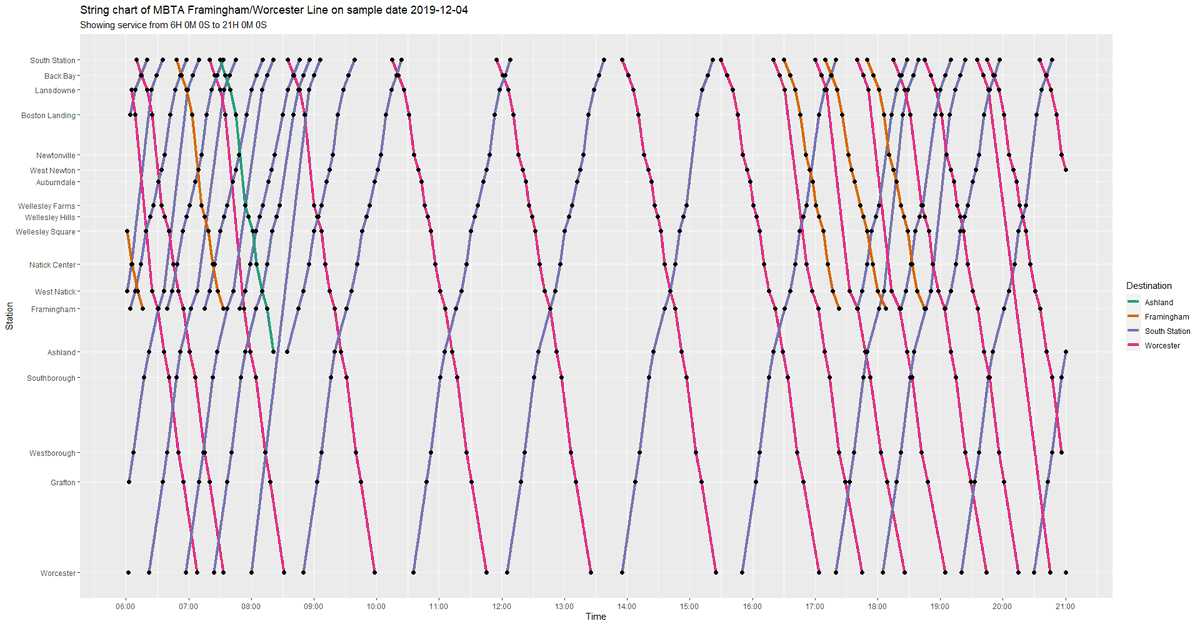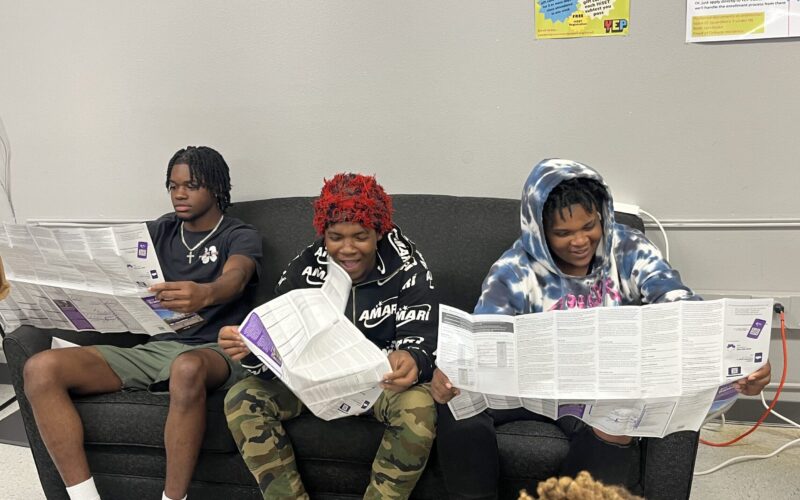
Image via the MBTA
Commuter rail systems across the country are facing an existential crisis. Since the pandemic struck, ridership dropped by as much as 95% on some systems as white collar workers shifted to working remotely, and has been slow to recover thus far. But even prior to the pandemic, there was a growing consensus that the American “commuter rail” model doesn’t work well. Advocates in Philadelphia, New York, and Chicago have been making the case that these networks – with their costly fares and rush hour-focused schedules – leave out too many people.
The campaign to transform commuter rail services into frequent, affordable “regional rail” is most advanced in Boston, where advocates had shifted the MBTA’s outlook before the pandemic. In November 2019, the MBTA’s Fiscal Management and Control Board voted to embrace a Regional Rail Transformation vision, the brainchild of local advocacy organization TransitMatters. The plan calls for a rail network that functions more like an urban metro, with all-day service that works for all types of trips and riders, not just downtown office workers commuting from more affluent suburbs.
The drastic effects of COVID on regional travel have prompted one advance toward the regional rail transformation. On April 5, the MBTA changed commuter rail schedules to better accommodate travel outside the morning and evening rush.
Previously, service was heavily concentrated on inbound morning trips and outbound evening trips. Headways were irregular, and on some lines midday gaps between trains could stretch longer than two hours. Now, inbound and outbound trains run hourly throughout the day, granting people who don’t work 9-to-5 jobs better access to the speed and convenience of rail.

The MBTA’s Framingham/Worcester line schedules as of December 2019

The MBTA’s Framingham/Worcester line schedules as of April 2021
The change is a small step on the path toward full regional rail reform. Service has not been added — just redistributed from the peak to the off-peak. But that in itself is very significant, reflecting the MBTA’s flexibility and willingness to change service patterns.
The schedule changes came in response to both longstanding rider requests and shifting ridership trends, said Richard Dean, VP of Service Delivery at Keolis, which has operated MBTA’s commuter rail service since 2014. “Even prior to COVID, we’d been seeing changes in commuting patterns — people working from home, particularly on Mondays and Fridays — so there was already change happening. The pandemic has given us the nudge to actually rethink what we’re doing with commuter rail, and move to this all-day model.”
The decline in riders using peak-hour service during the pandemic created the political space for the MBTA to deliver overdue changes, said Jarred Johnson, COO of TransitMatters. “I think the T looked at it and said, ‘yeah, there’s going to be fewer complaints in the vein of wait a minute, what happened to my very specific train?’”
From the perspective of operational efficiency, the changes make a lot of sense. Train crews and rolling stock are spending more time in service, said Dean. Instead of a train heading into the city at 8 a.m. from Worcester and then waiting around in a Boston trainyard until departing at 5 p.m., that train is now turned around sooner and can make more trips.
Running more trains off-peak makes the service more equitable. During the pandemic, Johnson notes, ridership has shifted from largely white and middle class to a higher percentage of essential workers – “grocery store workers, hospital cleaners, those kinds of folks.” The recent schedule changes are already serving these riders better.
Boston is also surrounded by many smaller municipalities, known as “Gateway Cities,” that are home to large immigrant populations. Many residents in these cities have low incomes, don’t own cars, and work non-traditional hours. “One of the things that has definitely been a criticism of the T in the past was that it really treated these places like bedroom communities, with service out of them in the morning but not much service back in,” says Johnson. “And so the new schedule does provide more options and provides that bidirectional hourly service so folks can rely on the train to get back and forth.”
But at $10-$12 a ride, the commuter rail fares are too high for many residents of these cities. TransitMatters has pushed for fares to be lowered to the price of a subway ride, and Johnson points to two pilot projects in progress to gauge the effect of lower fares on ridership. He says there’s been long-standing resistance to fare reductions at the T because, although commuter rail service comprises a tiny part of total MBTA ridership, it generates an outsized portion of its revenue. He expects that if higher-income riders don’t return to the system in large numbers, the agency will ultimately try to gin up ridership by offering deeper and broader fare discounts.
While the hourly off-peak schedules are a welcome change, there’s still a long way to go to achieve the frequent, affordable, all-day service championed by TransitMatters. Johnson points to staffing levels per train, the lack of stations with level boarding, and bottlenecks in the rail network as impediments to the full regional rail vision.
Since 2019, Johnson has seen other signs of progress. “The T hired an official transformation officer to oversee the project, and has put out an RFI for electric multiple units,” he said. “There has been some movement.” But he’d like to see the agency make regional rail more of a public priority.
“There’s been virtually no engagement outside of updates to the board about this,” he says. “If you don’t follow this issue closely, you wouldn’t know it was happening.” The price tag for the full transformation is estimated at $29 billion, and Johnson would like to see the MBTA position itself to receive money from the recent American Rescue Plan for it. “But that can’t happen if the T is not articulating a vision and rallying advocates behind this vision,” he says.
Dean, of Keolis, recognizes that hourly service is only the first step towards delivering on the full regional rail vision. “The thing with transportation, it’s always about chicken and the egg, isn’t it? Which one comes first?” he says. “In a way, we’re trying to show what a more frequent service could look like, but that would be enabled, even more so, with infrastructure development and electric trains, and so on. So, I think this is a bit of a teaser for that.”
Johnson says the sorts of changes championed by TransitMatters should be a no brainer for cities across the country with underutilized commuter rail systems. “Transforming commuter rail is both visionary and achievable. Everyone is familiar with how much transit construction costs. This is like getting a second subway system for a fraction of that cost.”
 On the Brink: Will WMATA’s Progress Be Erased by 2024?
On the Brink: Will WMATA’s Progress Be Erased by 2024?
The experience of being a WMATA rider has substantially improved over the last 18 months, thanks to changes the agency has made like adding off-peak service and simplifying fares. Things are about to get even better with the launch of all-door boarding later this fall, overnight bus service on some lines starting in December, and an ambitious plan to redesign the Metrobus network. But all of this could go away by July 1, 2024.
Read More Winning Free Fares for Youth in New Orleans
Winning Free Fares for Youth in New Orleans
Most transit agencies rely on fare revenue to fund operations, meaning many are forced into the position of needing to collect fares from the people who can least afford it. To change this paradigm, advocates across the country are fighting for - and winning - programs that allow agencies to zero out fares for youth, removing one of the largest barriers to youth ridership.
Read More